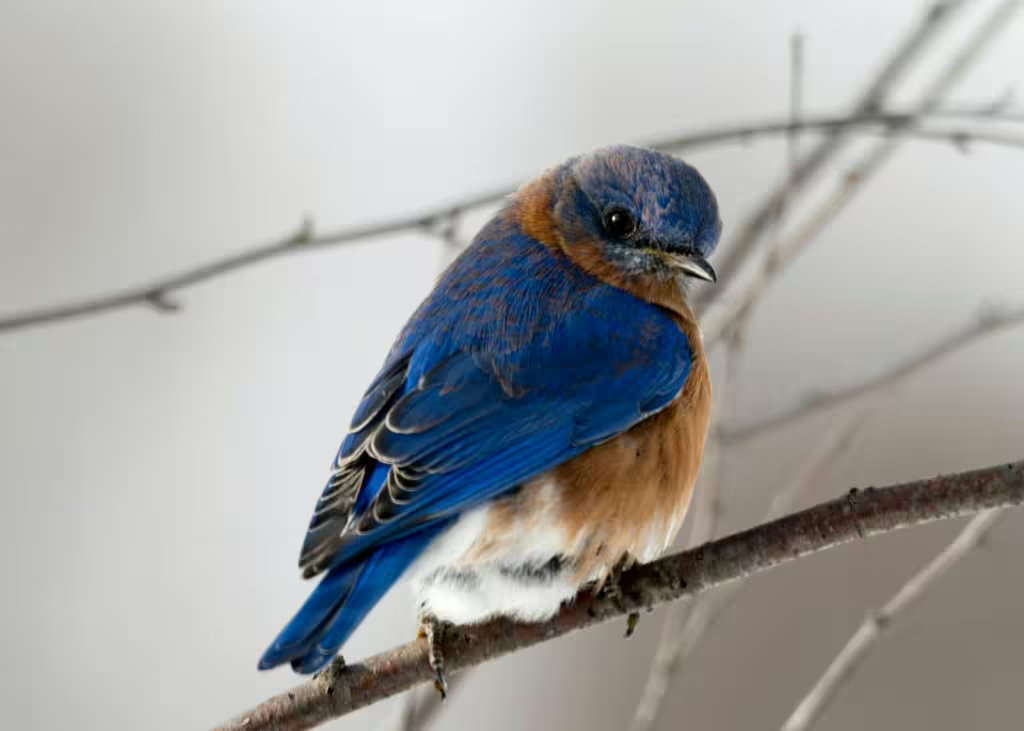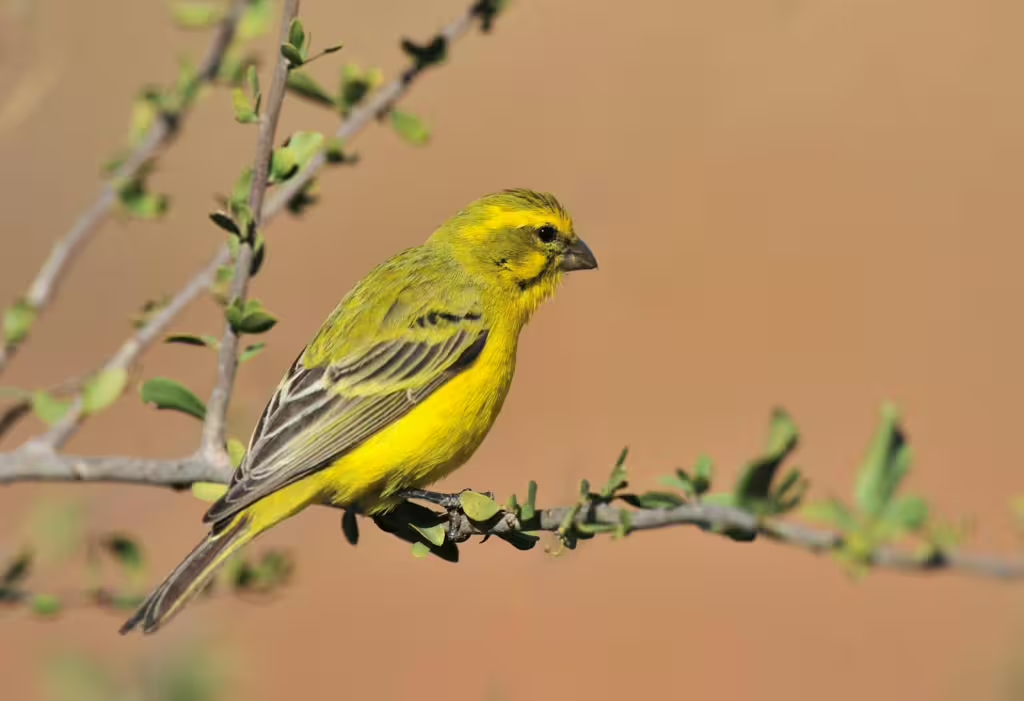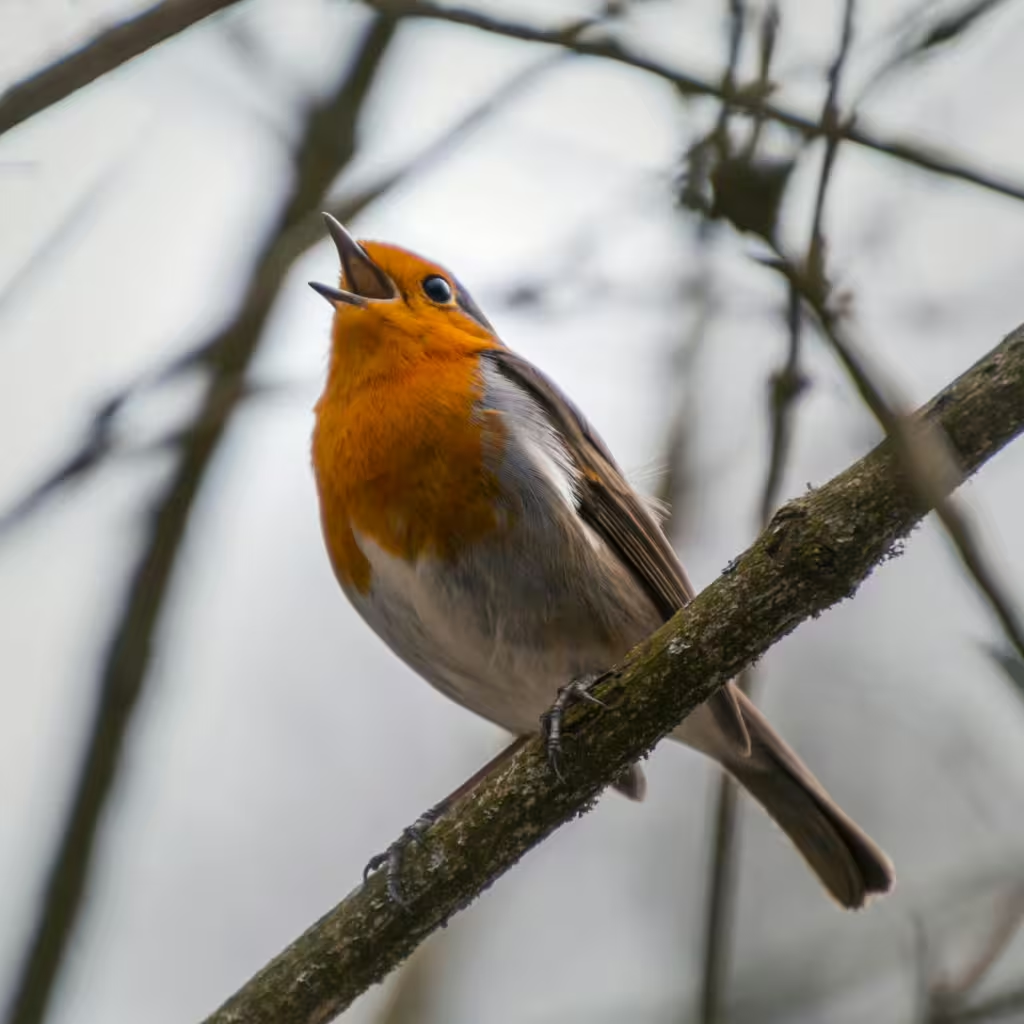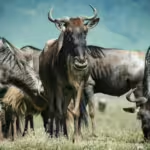When we walk outdoors, especially in the Spring when the Winter frost has begun to melt away, the sweet melodies of songbirds fill the air. These songs fill forests, fields, and cities all across the globe, creating a natural soundtrack that many of us cherish. From the cheerful trill of a robin at dawn to the warbling tune of a wren in the afternoon, these iconic birdsongs bring a sense of peace, familiarity, and grant human beings a connection to nature that so many of us are lacking nowadays.
What most people don’t realize is that these beautiful birds are more than just pleasant to hear; they are a means of communication that these birds use to keep their populations healthy. Moreover, they are an indication of the overall health of these birds’ respective ecosystems. The uninitiated don’t realize that songbirds play such crucial roles in maintaining environmental balance. Songbirds, in particular, are essential for pest control, seed dispersal, pollination, and forest regeneration, meaning that their contributions reach far beyond that of their musical appeal.
Many species feed on insects that can damage crops or spread disease, offering a natural form of pest control to agricultural and natural ecosystems. Other species consume fruits and spread seeds through their droppings, which helps plants grow in new areas. Some iconic songbird species even assist in pollination, supporting the reproduction of flowering plants. This is why scientists rely on their presence as an indicator of environmental health, signaling changes in climate, pollution levels, or habitat conditions. In essence, songbirds act as both caretakers and messengers for Mother Nature.
In this article, we will explore the lives and behaviors many iconic songbird species from around the globe. We will highlight their unique traits, the melodious calls they make, and the indispensable roles they play in sustaining biodiversity and ecological harmony.

American Robin (Turdus migratorius)
One of North America’s most familiar birds, nay, perhaps one of the most familiar birds in the world thanks to DC Comics, is the American Robin. This iconic bird is often seen as a harbinger of spring, which makes sense as their distinctive “cheer-up, cheerily” song signals a real change in then seasons. The diets of these birds are quite diverse, though the vast majority of what they eat consists mainly of insects and earthworms. This makes them vital to controlling pest populations of certain species.
At the same time, robins also consume significant amounts of fruits and berries, which helps them to disperse seeds across wide areas as they er…go on the go, if you will. Either way, by aiding in seed germination and plant propagation, robins contribute to the regeneration of forests and many urban green spaces; the latter of which have become more and more important in an increasingly urban world.
European Nightingale (Luscinia megarhynchos)
The European Nightingale has been celebrated over the centuries for its rich, complex song; a song that has inspired poets and musicians for many generations. In Disney’s Cinderella, the titular character sings a song that references the “sweet nightingale,” which should give some indication of the overall importance of this, most familiar songbird. Beyond their cultural impact and the inspiration they have created in humankind, nightingales also happen to be important for their environmental contributions, specifically in the realm of insect control. These melodious birds feed heavily on beetles, ants, and caterpillars, helping to keep these populations in check. This, in turn, protects plant communities within their habitat. During migration, they also serve as prey for larger predators, playing an additional role in the food chain. Nightingales prefer dense underbrush, meaning their presence often indicates a healthy, thriving habitat of that nature.
Northern Mockingbird (Mimus polyglottos)
So-named because of its uncanny ability to mimic the calls of other bird species, the Northern Mockingbird has become somewhat famous in the world of birds. Not only is the Mockingbird a consummate performer, it is also a dynamic contributor to its environment. These avian artists feed on a variety of insects, from beetles to wasps, helping to naturally manage pest populations within their chosen ecosystem. Additionally, their frugivorous habits promote the spread of native plants, as their ability to fly can see them transporting seeds over considerable distances. Meanwhile, their aggressive defense of nesting sites can even benefit other birds, creating safer areas for multiple neighboring species, bird and non-bird alike.
Wood Thrush (Hylocichla mustelina)
The name of the Wood Thrush might not be familiar to non avian enthusiasts, but many may have unknowingly heard the bird’s hauntingly beautiful, flute-like song. Regardless of their popularity, Wood Thrushes are important bioindicators of a forest ecosystem’s overall health. This is because these birds thrive best in mature, unfragmented forests. Thus, their presence often points to a well-preserved ecosystem that has been unmarred by human agricultural or urban advancement. The problem is, when Wood Thrush populations are in decline, as they are at present, it is a sign that something very bad is happening ecologically. The truth is, Wood Thrush populations are declining due to habitat loss and this loss only serves to highlight the interconnected vulnerability of songbirds and their environments. Wood Thrushes feed on insects and arthropods, which helps control pest populations. They also feed on berries, spreading seeds all around their forest homes. When there are no Wood Thrushes to do this service, those two elements fall into disarray, and ecological chaos ensues.
Barn Swallow (Hirundo rustica)
With their graceful flight and cheerful chirping call, Barn Swallows are admired for their songs all over the world. These birds are exceptional aerial insectivores, consuming huge quantities of flying insects like mosquitoes and other agricultural pests. Barn Swallows help to keep insect populations under control, providing natural pest management services that benefit both natural ecosystems and human agriculture. They also build very unique, mud-cup nests, which also contribute to local biodiversity. This is because abandoned nests may later be used to shelter insects and other small animals.
Common Nightjar (Caprimulgus europaeus)
The Common Nightjar is a crepuscular bird, which means it is active at dawn and dusk. It is also well known for its distinct churring calls and the crucial role that it plays in ecosystems. This bird feeds almost exclusively on flying insects, including moths and beetles. Thus, Nightjars help control nocturnal insect populations that could otherwise damage crops and forests. They also have specialized, ground-nesting habits, which can influence the composition of undergrowth plants, subtly altering seed dispersal patterns within the ecosystem.
Song Sparrow (Melospiza melodia)
One of North America’s most widespread and adaptable songbirds is the Song Sparrow. This popular bird is a key player in many ecosystems, both because of what they eat and what eats them! Song Sparrows feed on a mix of insects and seeds, aiding both in pest control and plant reproduction. At the same time, they serve as prey for hawks, foxes, and snakes, helping them to round out the food web. Their diverse diet and wide range make them particularly resilient amongst songbirds and this is actually quite pertinent. In many ways, Song Sparrows demonstrate how generalist species are critical pieces within an ecosystem. This is because their mere existence buffers ecosystems against environmental change; something which is in constant flux in the modern age.

Zebra Finch (Taeniopygia guttata)
Native to Australia, Zebra Finches are not just charming singers; they are important to the continued ecological health of grassland environments. These finches forage primarily on seeds, which promotes healthy plant dynamics by influencing which species propagate. During breeding seasons, Zebra Finches nest in such a way that they create additional microhabitats for other small creatures. finally, Zebra Finches also have been instrumental in scientific research on vocal learning, something which has shed light on animal communication systems of dozens of different species.
Black-capped Chickadee (Poecile atricapillus)
The Black-capped Chikadee is most recognizable by their cheerful and eponymous “chick-a-dee-dee-dee” call. But did you know that these birds are crucial winter survivors and ecological saviors in temperate forests? It’s true! Black-capped Chickadees feed on insects hidden in tree bark, thereby controlling pest populations even during colder months when other, less hardy predators might be scarce. Their food-caching behavior—hiding seeds and insects in various spots—works in the same way as a squirrel’s, and often results in accidental seed dispersal. This hoarding behavior supports plant regeneration, even in areas affected by habitat destruction. Chickadees’ ability to thrive in a variety of climates makes them just as essential as Song Sparrows and thus essential for ecosystem stability.
Yellow Warbler (Setophaga petechia)
Yellow Warblers are like little birds made of mellifluous sunshine. Native to North American woodlands and wetlands, these songbirds are highly insectivorous, consuming large numbers of leaf-eating caterpillars in their travels. Keeping these caterpillars at bay helps protect tree health in their ecosystem. Additionally, by migrating long distances, Yellow Warblers also serve as important connectors between ecosystems across entire continents. Unfortunately, the Yellow Warbler’s reliance on healthy wetlands makes them vulnerable to much of what happens in terms of modern habitat destruction. At the same time, it also underscores the importance of preserving these diminishing habitats.
Superb Lyrebird (Menura novaehollandiae)
Like the aforementioned Mockingbird, the Superb Lyrebird is an animal mimic of the highest caliber. This animal is one of the most remarkable mimics in the animal kingdom and doesn’t just copy the sounds of other birds, it can also imitate chainsaws and car alarms with equal aplomb. Also yes, it can mimic the calls of dozens of other bird species as well. Found in Australia, these birds help their ecosystems by turning over leaf litter as they forage. This behavior promotes nutrient cycling and their diet of ground insects helps to keep those insect populations in check. Additionally, this soil disturbance mimics natural processes essential for seed germination and ecosystem renewal, demonstrating how even non-obvious behaviors can have far-reaching environmental impacts.
Indigo Bunting (Passerina cyanea)
Dubbed the “blue canary,” the Indigo Bunting’s singular coloration and cheerful song are a signal that their habitat is both rich and thriving. Feeding on a variety of insects and seeds, these birds are pest control experts and seed dispersal dynamos. Their existence helps farmland, forests, and scrublands alike. Unfortunately, these migratory birds also rely on celestial navigation, which makes them particularly susceptible to light pollution and climate changed weather patterns. They are a grim reminder of how human changes can ripple through natural systems and upset even the tiniest of lives.
House Wren (Troglodytes aedon)

House Wrens are tiny birds with very loud voices. They also play pretty important ecological roles as pest controllers and environmental architects. These birds feed voraciously on insects, such as caterpillars, beetles, and spiders, helping protect plant communities from their overpopulation. Also, their competitive nesting behaviors often shape local bird populations, influencing which species thrive in an area. As cavity nesters, House Wrens may also benefit other wildlife by expanding or abandoning nests that are later used to shelter other creatures.
Eastern Meadowlark (Sturnella magna)
With their melodic, flute-like song, Eastern Meadowlarks are iconic American grassland inhabitants. They feed primarily on insects, especially during breeding season, providing natural pest control to agricultural lands. Their nesting habits also contribute to the health of prairie ecosystems, as their foraging impacts plant diversity and soil structure. Sadly, these birds are declining due to habitat loss, like so many species on this list.
True Investigator Says…
As you can see, songbirds are not just pretty voices singing in the treetops. These dynamic animals are pollinators, pest controllers, seed dispersers, and vital links in a hundred different food chains around the world. In many cultures. these songs are evocative and emotionally-resonant. They remind us of the beauty and complexity of nature, while their everyday actions help to quietly sustain ecosystems everywhere. We take these birds for granted, but protecting them and their homes means protecting the broader environments that we, too, depend upon for survival.
This is why we write these articles, incidentally, so that readers who may not truly understand the importance of a robin in their backyard are made aware of the vital importance even the smallest, most innocuous creatures represent. By understanding and valuing songbirds, we can all learn to appreciate the harmony of lives that they help maintain—and ensure that their songs continue to fill the Springtime skies for generations to come.
Discover more from TrueInvestigator
Subscribe to get the latest posts sent to your email.


